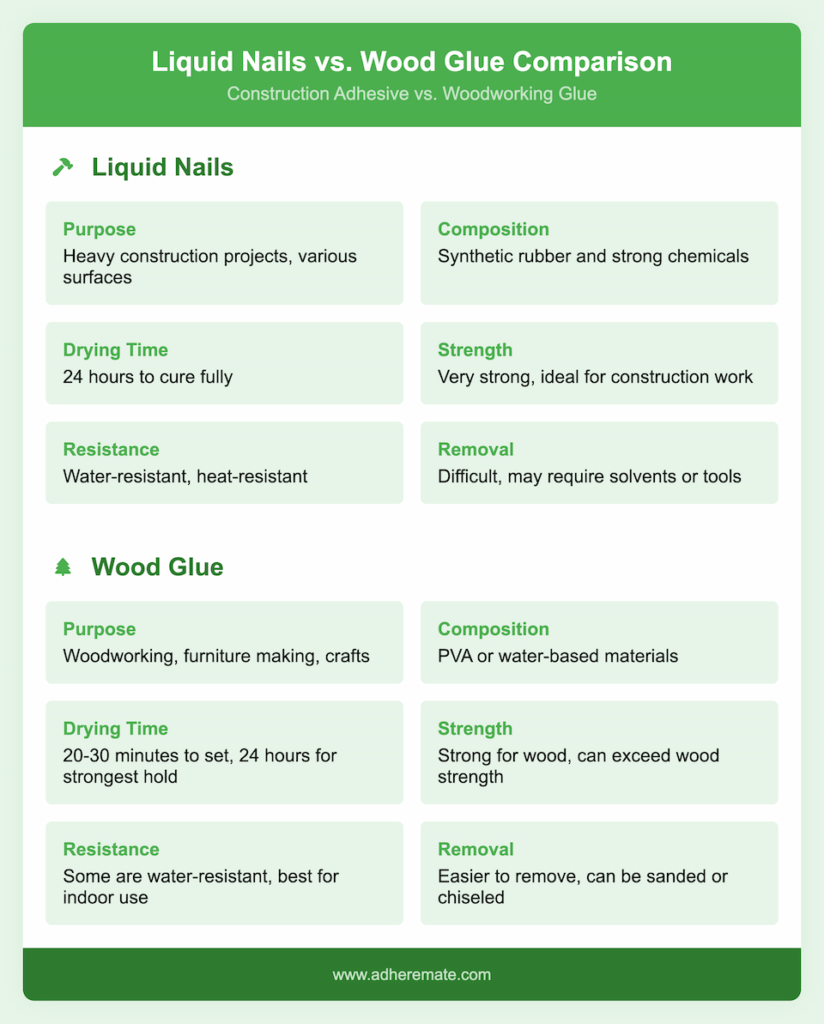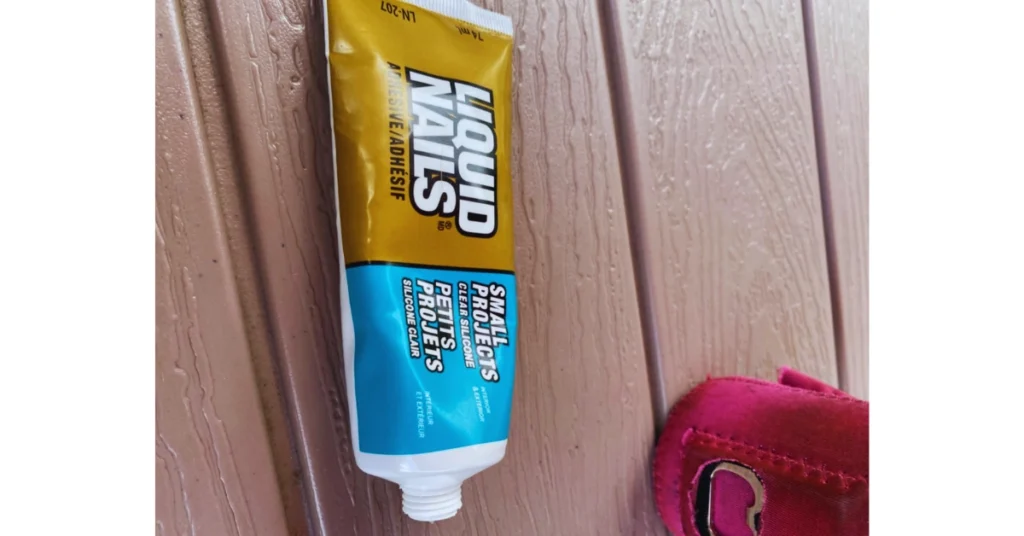Many people ask whether they can use Liquid Nails instead of wood glue. This question may pop up on Liquid Nails vs. wood glue Reddit threads. After all, they are both glues that stick things together.
But here’s the deal: Liquid Nails is really strong. It’s perfect for heavy jobs like fixing tiles or putting up walls. You can use it on lots of different surfaces.
However, wood glue is made just for wood. You can not use it for heavy projects.
So, even though both are adhesives, they’re not the same. This article will explain their differences further.
Keep reading to find out more about Liquid Nails vs. wood glue!
Article Highlights
- Liquid Nails is stronger than wood glue.
- You can use Liquid Nails for wood as well.
- Wood glue dries quickly and has a mild odor.
- Liquid Nails and wood glue have different purposes; you can’t interchange them.
Is Liquid Nails as Strong as Wood Glue?
Liquid Nails are strong, like Gorilla construction adhesives, particularly for heavy-duty construction tasks, but wood glue can form a bond stronger than the wood itself in woodworking.
Wood glue is often the better choice for wood-specific projects, especially joints.
Liquid Nails is thicker and work better for construction tasks, while wood glue is explicitly designed to bond wood effectively.

Liquid Nails vs. Wood Glue
Purpose
Liquid Nails is useful for heavy construction projects and on other surfaces. Wood, metal, and tiles are perfect for this.
I prefer using Liquid Nails Heavy Duty Construction Adhesive to fill gaps. It is also suitable for plywood and brick. One advantage is that it is waterproof and weatherproof and can bond to various materials.
Wood glue is different. It’s specially made of wood. Use it for making furniture, crafts, and other woodworking projects. It won’t hold up well in heavy construction tasks.
Composition
Synthetic rubber and strong chemicals create Liquid Nails, so they hold up well and do not budge.
Wood glue usually contains polyvinyl acetate (PVA) or other water-based materials, which makes it friendlier for indoor use. It can also contain hide glue, polyurethane glue, and epoxy glue.
Moreover, Liquid Nails is thicker than wood glue. Liquid nails hold heavy materials in place to have a dense, paste-like consistency.
On the other hand, wood glue has a thinner, more fluid consistency. It’s made for smoother surfaces and delicate joints in woodworking.

Drying Time
Liquid Nails take 24 hours to cure fully, so if you’re in a rush, They’re not your best option. In some cases, Different Liquid Nail products have different curing times. Some Liquid Nails can cure faster than others. Sometimes, temperature and humidity play a bigger role when curing.
Wood glue dries much faster. In most cases, it sets within 20 to 30 minutes. However, it might take a full day to reach its strongest hold. This quick drying time is perfect when you want to keep working on your project.
Strength
Liquid Nails is known for being super strong. That’s why they’re the go-to choice for construction work requiring extra hold.
Wood glue is vital, too, but it’s specially made for wood. When it dries, it creates a bond that can be even stronger than the wood. However, it’s not the best option for heavy materials or outdoor projects, especially in wet weather.
Resistance
Both Liquid Nails and wood glue are water-resistant. However, all the Liquid Nails is not water-resistant but heat-resistant. They’re ideal for outdoor construction projects. They provide a robust and rigid bond but can be less forgiving if materials shift.
On the other hand, wood glue is best for indoor woodworking. Not all wood glue is water resistant; some outdoor wood glue is, so check before purchasing.
So, for projects exposed to moisture or heat, choose Liquid Nails. Wood glue is the better option for a robust and adaptable bond for furniture and crafts.
Removal
If you accidentally spill Liquid Nails, then best of luck. Removing Liquid Nails is tough and time-consuming.
It sticks hard, so you often need special solvents or tools to remove it after it’s cured. This can make cleanup tricky if you mess up.
Thankfully, if you are using PVA wood glue, it will be much easier to work with.
If you quickly wipe off excess glue before it dries, only water and cloth are enough. Moreover, you can sand it off after drying or use a chisel without too much trouble.
However, polyurethane-based wood glue is much harder to remove. You might need to chisel or sand to remove it.

Odor and Fumes
Liquid Nails can sometimes have a strong odor because of the chemicals. But it will not harm your throat or nose. Still, you should keep the windows open or work outside if possible.
Wood glue, especially water-based kinds, usually has a mild odor. It’s safe indoors without much ventilation, making it a better choice for indoor projects.
Editors Opinion
As someone who has worked on various DIY projects, I’ve seen firsthand how the right glue can make all the difference. However, if you choose the wrong glue, your projects can be messed up.
For heavy construction projects, always opt for Liquid Nails. But if you want small repairs or home DIY projects, choose wood glue.
While Liquid Nails offers strength for construction, wood glue provides a clear bond for woodworking.
Do not interchange these two adhesives; use them for their actual purpose.


